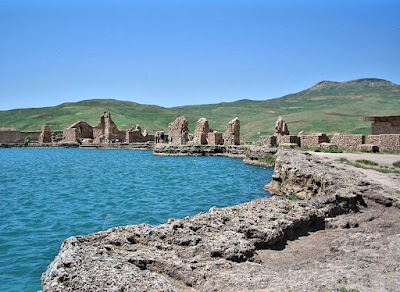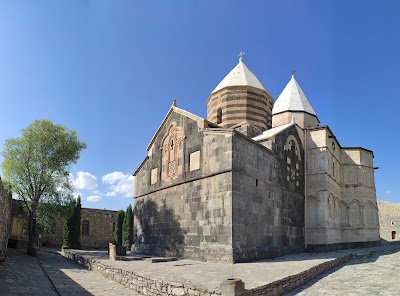Takht-e Soleyman (تخت سلیمان)
Overview
Introduction to Takht-e Soleyman
Nestled in the picturesque landscapes of West Azarbaijan, Iran, Takht-e Soleyman—translated as "Throne of Solomon"—is a UNESCO World Heritage site that beckons travelers with its rich history and stunning natural beauty. This ancient archaeological site holds significant cultural and historical importance, showcasing the remnants of a once-thriving Zoroastrian fire temple complex that dates back to the Sassanian era. The allure of Takht-e Soleyman lies not only in its historical significance but also in the breathtaking scenery surrounding it, making it a perfect destination for both history enthusiasts and nature lovers alike.
Historical Significance
The history of Takht-e Soleyman is intricately woven with the tales of ancient Persian civilization. It served as a religious and royal center, believed to be associated with the legendary King Solomon. The site features a large fire temple, remnants of palatial structures, and a stunning lake that adds to its mystique. The temple complex is dominated by a large circular structure, which was used for the worship of fire, an essential element in Zoroastrianism. Visitors can explore the fascinating ruins that echo the grandeur of the Sassanian Empire, including intricate stone carvings and inscriptions that tell stories of a bygone era.
The Natural Landscape
Surrounded by the rugged mountains of the Alborz range and lush green valleys, Takht-e Soleyman is a feast for the eyes. The site is situated near a serene lake, known as Lake Zarivar, which adds a tranquil charm to the already majestic surroundings. The combination of historical ruins and natural beauty allows visitors to immerse themselves in a unique experience, where the past meets the present. Photographers and nature enthusiasts will find countless opportunities to capture stunning vistas, from the reflections in the lake to the striking mountain backdrops.
Visiting Takht-e Soleyman
For foreign travelers, reaching Takht-e Soleyman can be an adventure in itself. The site is approximately 45 kilometers from the city of Takab, which is the nearest urban center. Visitors can easily hire a taxi or rent a car to navigate the scenic routes leading to the site. Once at Takht-e Soleyman, guided tours are available to help you navigate the extensive ruins and provide valuable insights into the site's history. Ensure you wear comfortable shoes, as exploring the ancient pathways can require considerable walking.
Practical Tips
When planning your visit to Takht-e Soleyman, consider the best time to go. Spring (March to May) and autumn (September to November) are ideal periods due to the mild weather. Additionally, it is advisable to carry essentials such as water, sunscreen, and a camera to capture the breathtaking landscapes. Local eateries offer traditional Persian cuisine, so be sure to indulge in the regional flavors while enjoying your visit.
In conclusion, Takht-e Soleyman is not just an archaeological site; it is a portal to ancient Persia and a breathtaking testament to the region's rich cultural heritage. Whether you are a history buff, a nature lover, or simply an adventurous traveler, Takht-e Soleyman promises an unforgettable experience that will linger in your memories long after you leave its enchanting embrace.




